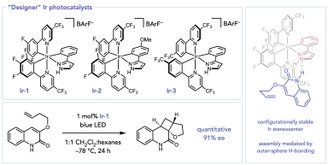atomic change, Chemical reactions in which certain atoms of a molecule are “manually” replaced by another are becoming common in organic chemistry.As new techniques and methodologies become available to researchers. The new trend opens avenues for the synthesis of complex molecules and the development of new drugs and materials.
Two papers recently published in the journal Science provide solid examples of arranging complex molecules using chemical reactions. In the first of these, “Single Atom Editing with Light,” Ellie Plachinski and Tehshik Yoon from the University of Wisconsin-Madison in the USA describe the process and explain how it can be used to increase the effectiveness of a drug.
In the other paper, titled ‘Photocatalytic conversion of furan to pyrrole’, a team of researchers from the Korea Advanced Institute of Science and Technology in Dejeon, South Korea, used light as a photocatalyst to activate a furan ring. This cyclic structure of atoms is often found in many organic molecules.
Using Light to Arrange a Single Atom
In their laboratory at the University of Wisconsin-Madison, Ellie Plachinski and Tehshik Yoon are investigating the development of strategies for the controlled photochemical synthesis of complex molecules. Although very promising as a tool for chemical synthesis, photochemistry has long been a challenge, especially in terms of controlling the outcome of its reactions.
In your new article, The duo used light to replace a heterocycle (ring of atoms), replacing the oxygen atom with a nitrogen atom. The result was a very similar molecule but with potentially different properties due to its new composition.
The paper emphasizes that “The properties of a bioactive molecule depend largely on the precise arrangement of the atoms that compose it.” In this case, removing a single atom from the molecular ring (containing at least one non-carbon atom) can have a profound effect on the drug’s effectiveness.
Photoconversion of a furan compound to pyrrole

Furan is an organic substance found in medicinal plants and used in the synthesis of compounds with anti-inflammatory and antimicrobial effects. It contains a ring of elements consisting of four carbon atoms and one oxygen atom. Pyrrole, a compound found in hemoglobin, has a structure similar to the structure of furan but with a nitrogen atom.
In their study, Yoonsu Park’s team Light-driven reaction replacing furan’s oxygen atom with a nitrogen atomconverts the molecule into pyrrole. The innovation here was that the authors worked with five-membered aromatic rings, which are often used in the synthesis of pharmaceutical products, instead of six-membered rings.
In his press release, Park explained that the aim of the study was to create the chemistry of pencil and eraser: “delete one atom and add another”compare. The paper states that using this technique in medicinal chemistry would allow researchers to test, for example, the effect of different heteroatoms on the properties of a precursor drug, without having to synthesize each variant from scratch.
New techniques for using light to transform molecules

Park explained in a statement that he and his colleagues were inspired by a 1971 paper in which researchers used ultraviolet light to convert a furan into N-propylpyrrole as a way to increase yield. They used ultraviolet light to replace the oxygen atom in furan with a nitrogen atom.
The team emphasizes that this edition is problematic because it contains issues with delocalization that affect the stability of electrons. Additionally, previous experiments have involved the use of high temperatures or radiation.
To test whether modern photochemical techniques could achieve the same conversion more efficiently, the new approach used light as a photocatalyst to activate a furan ring. The technique used resulted in single electron oxidation to furan, resulting in free radical formation. can function as a reactive intermediate allowing additional chemical reactions.
Did you like the content? So stay updated with more studies like this on TecMundo and take the opportunity to share the article on your social networks. Until next time!
Source: Tec Mundo
I’m Blaine Morgan, an experienced journalist and writer with over 8 years of experience in the tech industry. My expertise lies in writing about technology news and trends, covering everything from cutting-edge gadgets to emerging software developments. I’ve written for several leading publications including Gadget Onus where I am an author.











